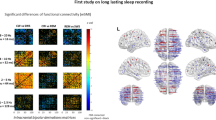Abstract
In this study we explored the use of coherence and Granger causality (GC) to separate patients in minimally conscious state (MCS) from patients with severe neurocognitive disorders (SND) that show signs of awareness. We studied 16 patients, 7 MCS and 9 SND with age between 18 and 49 years. Three minutes of ongoing electroencephalographic (EEG) activity was obtained at rest from 19 standard scalp locations, while subjects were alert but kept their eyes closed. GC was formulated in terms of linear autoregressive models that predict the evolution of several EEG time series, each representing the activity of one channel. The entire network of causally connected brain areas can be summarized as a graph of incompletely connected nodes. The 19 channels were grouped into five gross anatomical regions, frontal, left and right temporal, central, and parieto-occipital, while data analysis was performed separately in each of the five classical EEG frequency bands, namely delta, theta, alpha, beta, and gamma. Our results showed that the SND group consistently formed a larger number of connections compared to the MCS group in all frequency bands. Additionally, the number of connections in the delta band (0.1–4 Hz) between the left temporal and parieto-occipital areas was significantly different (P < 0.1%) in the two groups. Furthermore, in the beta band (12–18 Hz), the input to the frontal areas from all other cortical areas was also significantly different (P < 0.1%) in the two groups. Finally, classification of the subjects into distinct groups using as features the number of connections within and between regions in all frequency bands resulted in 100% classification accuracy of all subjects. The results of this study suggest that analysis of brain connectivity networks based on GC can be a highly accurate approach for classifying subjects affected by severe traumatic brain injury.






Similar content being viewed by others
References
Box GEP, Jenkins GM, Reinsel GC (2008) Time series analysis: forecasting and control. John Wiley, New York
Cortes C, Vapnik V (1995) Support-vector networks. Mach Learn 20(3):273–297
Cui J, Xu L, Bressler SL, Ding M, Liang H (2008) BSMART: a Matlab/C toolbox for analysis of multichannel neural time series. Neural Netw 21:1094–1104
De Vico Fallani F, Baluche F, Astolfi L, Subramanian D, Zouridakis G, Babiloni F (in press) Structural organization of functional networks from EEG signals during motor learning tasks. J Bifurcat Chaos
Frye RE, Wu M, Zouridakis G, McGraw Fisher J, Liederman J, Halgren E (2007a) Changes in cortical connectivity in young adults with a history of reading disability. Society of Neuroscience Meeting, San Diego, CA
Frye RE, Wu M, Zouridakis G (2007b) Dynamic autoregressive neuromagnetic causality imaging (DANCI). Proceedings of the WSEAS international conference on computers, Crete, Greece
Frye RE, Wu M, Zouridakis G (2009) A comparison of Granger causality methods for the analysis of neurophysiological data, under review
Gonzalez RC, Wintz P (1977) Digital image processing. Addison-Wesley, Reading, MA
Granger CWJ (1969) Investigating causal relations by econometric models and cross-spectral methods. Econometrica 37:424–438
Iriarte J, Urrestarazu E, Valencia M, Alegre M, Malanda A, Viteri C, Artieda J (2003) Independent component analysis as a tool to eliminate artifacts in EEG: a quantitative study. J Clin Neurophysiol 20:249–257
Langlois JA, Rutland-Brown W, Thomas KE (2006) Traumatic brain injury in the United States: emergency department visits, hospitalizations, and deaths. Centers for Disease Control and Prevention, Atlanta
Leon-Carrion J, Martin-Rodriguez JF, Damas-Lopez J, Barroso JM, Dominguez-Morales MR (2008) Brain function in the minimally conscious state: a quantitative neurophysiological study. Clin Neurophysiol 119(7):1506–1514 Jul
Max W, MacKenzie EJ, Rice DP (1991) Head injuries: cost and consequences. J Head Trauma Rehabil 6:76–91
Pophale S (2008) Quantification of cognitive processes in normal humans and patients with traumatic brain. MS Thesis, University of Houston
Robertson RH, Knight RG (2008) Evaluation of social problem solving after traumatic brain injury. Neuropsychol Rehabil 18(2):236–250
Seth AK (2005) Causal connectivity of evolved neural networks during behavior. Network 16:35–54
Seth AK, Edelman GM (2007) Distinguishing causal interactions in neural populations. Neural Comput 19:910–933
Steyerberg EW, Mushkudiani N, Perel P, Butcher I, Lu J, McHugh GS, Murray GD, Marmarou A, Roberts I, Habbema JD, Maas AI (2008) Predicting outcome after traumatic brain injury: development and international validation of prognostic scores based on admission characteristics. PLoS Med 5(8):e165
Teasdale G, Jennett B (1974) Assessment of coma and impaired consciousness. A practical scale. Lancet 2(7872):81–84
The Traumatic Brain Injury Model Systems National Data and Statistical Center (TBINDSC). http://www.tbindsc.org/Documents/2009%20TBIMS%20Slide%20Presentation.pdf
Acknowledgments
This work was supported in part by NSF grant no. 521527, by grants from UH-GEAR, the Institute for Space Systems Operations, and the Texas Learning and Computation Center at the University of Houston, and by a grant from the Center for Brain Injury Rehabilitation (CRECER), Seville, Spain.
Author information
Authors and Affiliations
Corresponding author
Additional information
This is one of several papers published together in Brain Topography on the “Special Topic: Cortical Network Analysis with EEG/MEG”.
Rights and permissions
About this article
Cite this article
Pollonini, L., Pophale, S., Situ, N. et al. Information Communication Networks in Severe Traumatic Brain Injury. Brain Topogr 23, 221–226 (2010). https://doi.org/10.1007/s10548-010-0139-9
Received:
Accepted:
Published:
Issue Date:
DOI: https://doi.org/10.1007/s10548-010-0139-9




